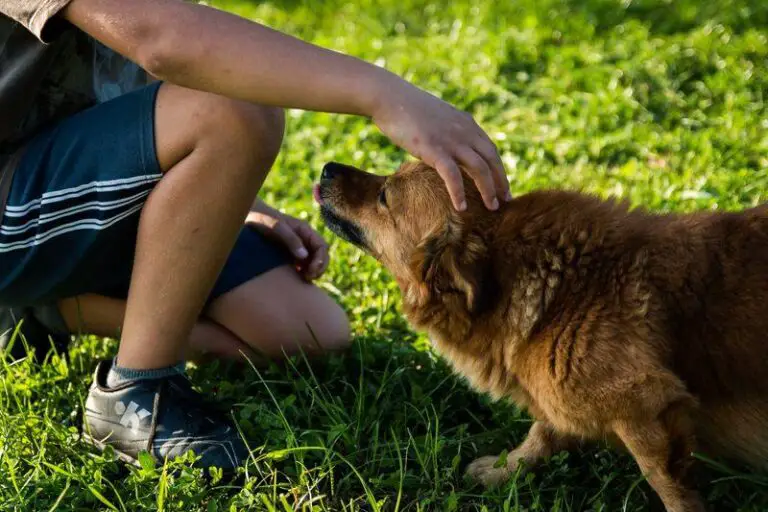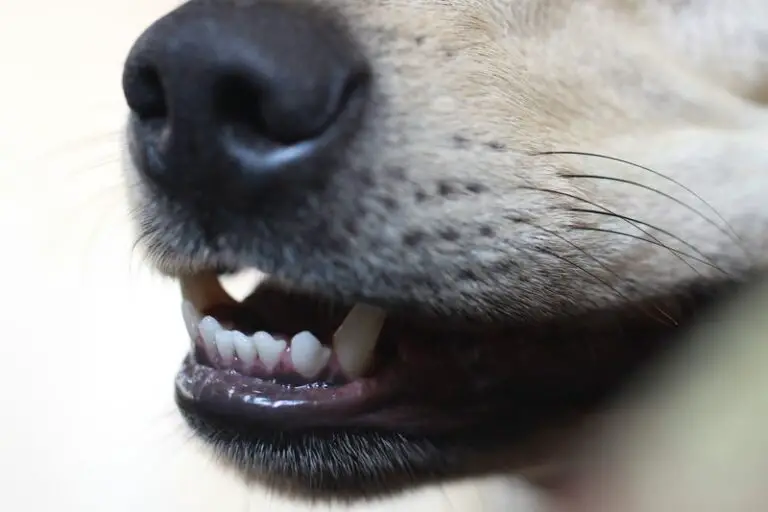What to Do When Your Puppy Is Eating Slower Than Usual?
Raising a healthy puppy starts with a nutrient-rich diet and good eating habits — puppies grow very quickly, so it’s important to make sure your dog’s meals are nourishing and well-portioned for their body.
Assuming your pup enjoys a balanced diet and plenty of exercise, they should be heading in the right direction for a long and healthy life.
But what happens when your puppy isn’t eating like it should? Generally speaking, changes in the way your dog eats should be noted, as there are many things that could be causing them.
From an upset stomach to serious digestive problems to just wanting to play, any number of things could be affecting your puppy’s appetite.
Inappetence, or anorexia, is very different in dogs than in humans in that it can be partial or complete. A puppy that only eats certain things or too small of portions may be suffering from partial anorexia, whereas a dog that won’t eat at all may be dealing with complete anorexia.
Sometimes your dog may actually want to eat but is unable to because of some underlying cause — this is known as pseudo-anorexia.
Other times, your dog may just be avoiding eating because of the food’s taste.
Changing your dog’s food options can easily encourage them to begin eating again.
Getting a dog to eat their dry food can also bring about many complications.
So how much should your puppy be eating?
This largely depends on the dog’s breed, but as a general rule of thumb, puppies should eat three to four small meals a day.
Smaller portions are easier for your puppy to digest and encourage healthy energy levels, so try to keep meals around 1/2 cup in size.
Puppies also need to stay well hydrated, meaning they should be drinking 1/2 cup of water at least every two hours.
It’s important to keep an eye on how much your puppy is eating and drinking as it grows, as poor nutrition can seriously affect a dog’s health as it gets older.
If you notice that your puppy is eating slower than usual and fear that it may be suffering from canine anorexia, it’s important to start paying close attention to its health and habits at mealtime.
Your most important job is determining the factors that may be hindering your dog’s appetite.
Distracted Eating
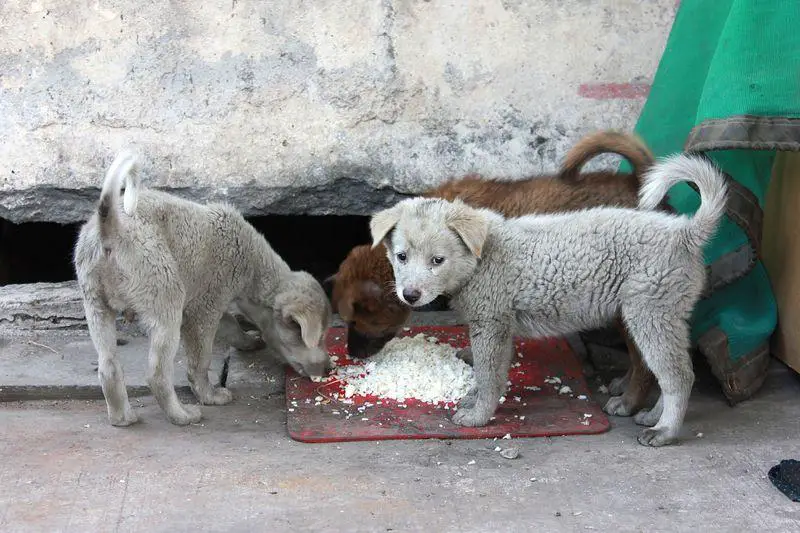
Puppies are young, full of energy, and want to play all day — as such, it’s easy for them to be disinterested in their food when it’s time to eat.
If your puppy’s leaving its food mostly untouched and its attention seems to be elsewhere at mealtime, you may have a distracted eater on your hands.
Fortunately, distracted eating is often easy to identify and can be fixed with a few small changes to your puppy’s food and environment.
Start by looking at your dog’s food.
Your puppy may not care for the taste or texture of its food, so it may stop eating after the first few bites.
Check the ingredients of your puppy’s food to ensure that it’s nourishing and made with high-quality ingredients, as lower-quality dog food usually doesn’t taste as good.
All-natural dog food like Blue Buffalo Life Protection for Puppies (link to Amazon) is a great choice, as it’s holistic and made with organic ingredients.
If your puppy doesn’t enjoy its food, try switching brands or flavors and keep an eye on your puppy to see how it responds to the change.
Also, be sure you’re feeding your puppy the right type of food.
Younger dogs need wet food for their developing teeth, and dry kibble may cause dental problems in the future.
On the other hand, older puppies may be ready to start eating dry food and might actually prefer it to wet.
If your puppy is eating slower than usual with any store-bought food, homemade food may be your next best bet.
There are countless recipes for delicious, fortifying dog chow that are easy to make and inexpensive, so don’t be afraid to give one a try if all else fails.
Another factor to keep in mind is the environment your dog is eating in.
Mealtime should be relatively calm and free of distractions like loud noises and toys.
Keep food bowls in the kitchen or dining room, put away any playthings when it’s time to eat and try not to feed your puppy too many treats or table scraps beforehand.
This is all a matter of preference and will take some trial-and-error. Be sure to dedicate enough time to find out what your puppy likes.
Your dog is part of the family and building healthy eating habits at a young age will help them live a longer and happier life.
Illnesses
Sadly, illness can be a major cause of a dog’s change in appetite, so it’s vital to have a thorough understanding of your puppy’s health right from the start.
Always be conscious of any underlying conditions that your pup may have been born with or is prone to, and be sure to regularly visit a trusted veterinarian.
When you notice your puppy eating slower than usual, there are a variety of conditions that could be at play, such as:
Stomach or digestive problems. Nausea, gas, indigestion, constipation and diarrhea can all seriously deter your puppy from wanting to eat. Any of these can come from low-quality dog food, certain human foods, food intolerance or other sicknesses.
Dental issues. If your pup’s teeth, jaws or gums are uncomfortable, it becomes harder to eat. This can occur with poor dental hygiene, hereditary conditions or blunt trauma to the mouth.
Bodily pain. Just as pain can inhibit your appetite, it can distract your puppy from wanting to eat. Injury, illness and pregnancy can all contribute to this, so pay attention to where your dog is experiencing pain.
Allergies. Whether it’s seasonal allergies or a reaction to specific triggers, inappetence is a common symptom of allergies. If you fear your puppy is having a dangerous allergic reaction, contact your local animal hospital immediately.
Infection. While animals may not catch a cold the same way people do, they can develop infections that cause a lot of the same symptoms, including nausea and loss of appetite. Keep an eye out for any other telltale symptoms such as congestion or sneezing.
Cancer and autoimmune disease. It’s important to remember that these types of diseases can bear a multitude of different symptoms alongside inappetence. If you fear your puppy may be suffering from a serious condition, speak with your regular vet about your concerns.
Depression and anxiety. Frequently overlooked all over the animal kingdom, these conditions may cause your dog to lose interest in many things — especially food. Treating depression and anxiety in your puppy takes a lot of love, effort, and direct work with a veterinary specialist, but is also absolutely necessary to help your dog live a happier life.
Stress. Most new puppy owners have a hard time identifying stressed puppy symptoms. Knowing how to identify and deal with stress can greatly improve your puppy’s eating habits.
Your First Steps
As a pet owner, you’ll want to have plenty of information about your puppy eating slower than usual. Ask yourself the following questions before taking any action:
1. How much has the puppy’s eating changed? Has it started leaving a few bites in the bowl or is there a noticeable amount of food leftover?
2. How abrupt is the change? Has your puppy gradually been eating less or has it suddenly lost its appetite? How has your puppy been eating in the days and weeks leading up to the current point?
3. How is your puppy behaving outside of mealtime? Does your dog seem playful and happy? Is it less energetic than usual? Is your puppy acting hostile or reclusive to other people or animals?
4. Are there any other symptoms? Has your puppy been sniffling, having trouble with bowel movements or appear to be in any pain? Are there any areas of the dog’s body with apparent damage, such as swelling, redness, bruising or bleeding?
Once you’ve taken a closer look at the situation, you can determine when to contact your veterinarian.
If the symptoms are not severe and your puppy is otherwise behaving normally, take some time to try changing food brands or reducing distractions at mealtime. Start serving meals at the same time every day and be sure your puppy is getting plenty of exercises, as both of these can help your dog build a healthy routine.
If these changes haven’t made a difference within one to two weeks, it may be time to speak with your vet to find out what else can be done.
If your puppy’s symptoms are severe or onset abruptly, you should contact your vet right away to schedule a sick visit.
Make a list of the symptoms your puppy is experiencing and try to encourage it to eat well until then.
However, if your puppy is suffering from extreme pain or discomfort, difficulty moving, shortness of breath, excessive vomiting, or bleeding, visit your local animal hospital right away for emergency treatment.
Overall, your puppy eating slower than usual can be caused by any number of factors, and resolving it comes down to understanding your puppy’s health and needs.
From the moment you bring your puppy home, you should start keeping track of not just dietary habits, but how your puppy sleeps, plays and interacts with others as well.
All of these things can affect a dog’s wellbeing, so knowing what is normal for your puppy can lead to a faster, more accurate diagnosis when problems arise.
When in doubt, safe is better than sorry — if you’re concerned about your dog’s health, contact your regular vet to learn how you can improve it.

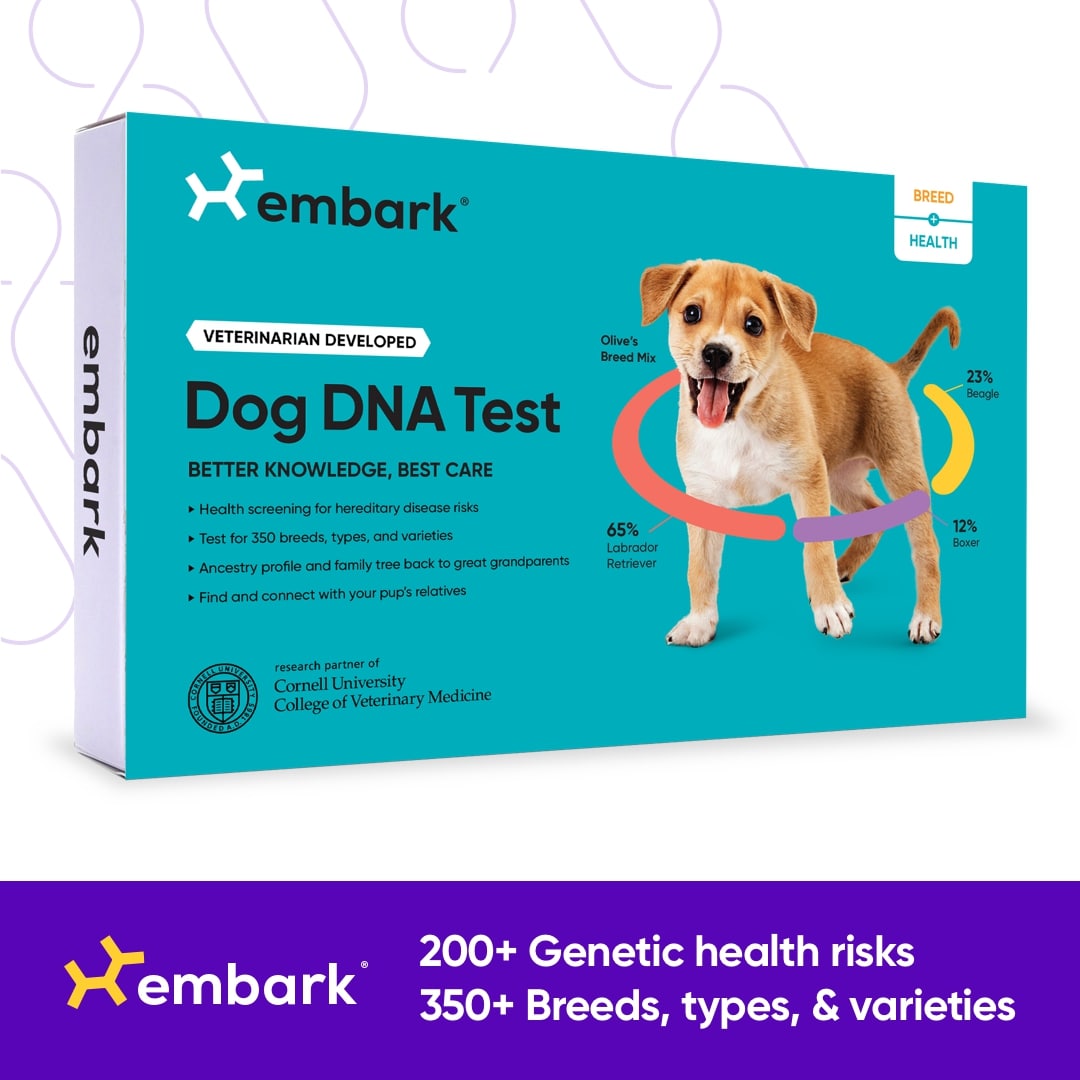


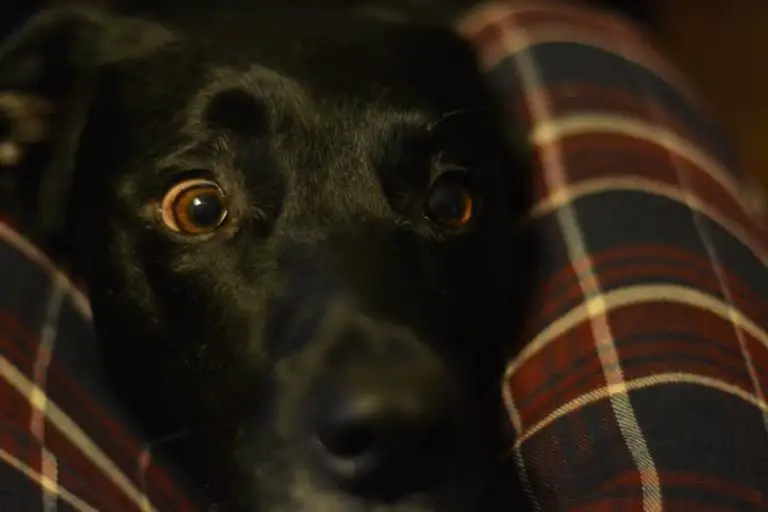
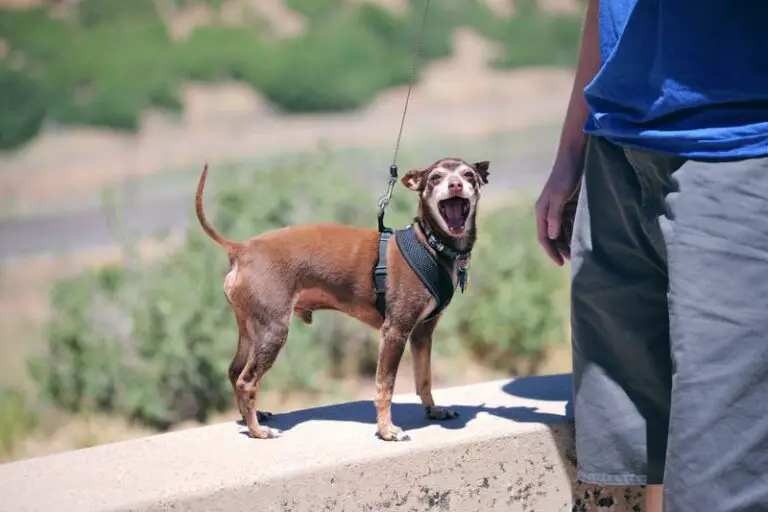
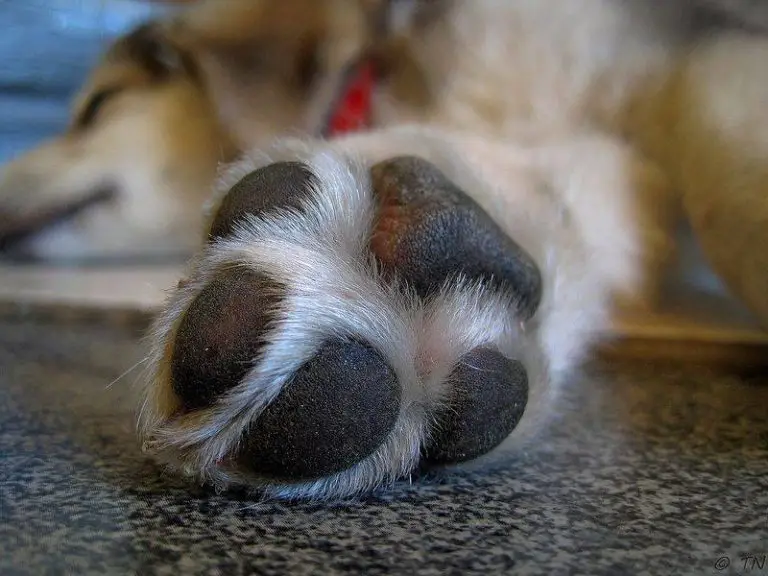
![Dog Won’t Lay Down? – [8 Common Reasons Why & How to Fix It]](https://smarterpuptraining.com/wp-content/uploads/2020/02/linnea-herner-X7xKQqW1cvc-unsplash-768x512.jpg)
